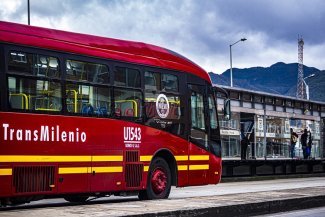On 20 May 2017 an estimated 100,000 people walked through the streets of Milan for one of the biggest anti-racism and pro-immigration rallies in Italian history. The event, dubbed ‘20 May. Without borders’, was organised by the progressive left-wing City Council (led by the Democratic Party) and Pierfrancesco Majorino, who heads the council’s social policy department, and was inspired by the massive pro-refugee march that took place in Barcelona on 18 February 2017.
As well as showing support for refugees, the demonstration was also held to protest punitive new Minniti-Orlando Law which will increase immigration detention, reduce migrants’ right to appeal and limit safeguards for asylum seekers.
The renewed focus on solidarity with refugees and migrants comes at a very significant time. According to Amnesty International’s Europe and Central Asia director John Dalhuisen, “2017 looks set to become the deadliest year for the deadliest migration route in the world.”
Last month, Amnesty published a new report, A perfect storm: the failure of European policies in the Central Mediterranean, which paints a very bleak picture of the crisis taking place on Europe’s southern border. According to the International Organization of Migration, 60,228 refugees and migrants arrived in Italy by sea during the first five months of 2017; Amnesty’s report reveals that 2.7 per cent of all those who attempted the journey died during the first six months of 2017, up from a 0.89 per cent mortality rate in the second half of 2015.
In response to the ever-increasing number of deaths at sea, the Italian parliament has announced controversial plans to send warships to the patrol the Libyan coast, intercept refugees and migrants at sea and send them back Libya where they face grave human rights abuses, violence, torture, extortion, rape and even death.
A recent article by Open Migration also points out that there are at least two or three coast guards operating in Libya, with some coast guards actually participating in, or even heading up, smuggling rings.
At the same time, hostility towards refugees and migrants is growing across Italian society. The anti-immigration party the Northern League did well in the local elections held in June and the migration crisis is likely to be a key issue in the general election that is expected to take place in early 2018.
The Milan Model
In the midst of this turmoil, Milan’s approach towards the reception of refugees and migrants represents a model of interest, not only for the rest of Italy, but also for the rest of Europe.
Since the outbreak of Europe’s refugee crisis, the Italian financial capital of Milan has been a major transit point for all those who land in southern Italy as they try to reach countries in northern Europe such as Germany, Sweden and the UK to be reunited with family and friends or to look for work.
To receive and assist them, a network of volunteers, activists and civil society organisations working with the city have developed the so-called ‘Milan Model’, a pioneering approach linking different individuals and agencies with the City Council in order to provide everything from food, clothing and shelter for the refugees or to help them with orientation and language classes.
There are currently 900 refugees under the care of Milan City Council, spread across different centres in the city, and 2,300 under the supervision of the Prefecture (a decentralised organ of the Home Office with a focus on public security, safety and migration) according to Claudio Meazza, an official specialising in migration with Milan City Council.
The Milan Model began with the council’s Emergenza Siria (Syria Emergency) reception project in October 2013, Meazza tells Equal Times. At the time, the CAIM (the Council of Islamic Associations of Milan and Monza) and the (Catholic) Community of Sant’ Egidio were already supporting Syrian refugees stranded in Milan’s Central Station. The City Council stepped into to help with the coordination of the various centres and activities aimed at hosting these refugees. Today, the reception of refugees is managed by the Prefecture at Bresso Airport and around the Lombardy region.
After years of increasing numbers, the number of refugee arrivals in Milan is slowly dwindling. From an average of 150 to 250 daily arrivals, Milan currently sees about 50 new arrivals per day, mainly due to the difficulties refugees encounter in making their way to northern Europe following the closure of the Balkan route and other borders.
The demographics of the refugees in Milan is also changing. While Syrians accounted for 95 per cent of new arrivals in Milan in 2013, 78 per cent in 2014 and only 20 per cent in 2015, numbers have reduced even further in recent years. At the same time, the number of refugees from Eritrea fleeing the regime of President Isaias Afewerki has increased: from accounting for 15 per cent of all refugee arrivals in Milan in 2014, they now account for 50 per cent.
The Hub
Milan’s Hub, a hotspot for refugees waiting to be processed in the city’s permanent and temporary hospitality centres, was established in October 2013 on the mezzanine floor of the city’s Central Train station, before it was eventually transferred to nearby Via Sammartini.
Since then it has been managed by the Fondazione Progetto Arca (Ark Project Foundation), a non-profit organisation that previously focused on supporting homeless people and drug users.
According to the journalist Marina Petrillo, the senior editor of Open Migration, the Hub “has mitigated the sufferings of the tens of thousands” of the estimated 107,000 refugees that travelled through Milan between September 2013 and November 2016. In its current form as a reception centre, the Hub can host up to 100 refugees every day.
“Milan is an open city and there is not just a network, but a dialoguing one, with constant contact with the City Council, the Prefecture and our partners [such as Save the Children].
There is a communion of intent that supports this work – this is the value of this model,” explains Sabrina Liberalato, head of the Ark Project Foundation’s refugee section.
Armana, a young Eritrean asylum seeker and mother of a 10-year-old son, was a service user at the Hub back in February. “I have a son, but they [the Eritrean government] wanted me to go to Massawa [a port and strategic base of the Eritrean Defence Forces] and serve in the Army. I did not want to go. Then they caught me in the streets of Asmara where I was working as a waitress and they arrested me. I was held prisoner in a women prison for two years, without a trial or a lawyer.”
On her release she took her son and fled the country, making the dangerous sea crossing to Italy via Sudan and Libya.
“My hope is to be safe with my son and to have a peaceful life,” Armana tells Equal Times.
The role of activists – and a change of heart?
Refugee rights activists have played a significant role in the success of the Milan Model.
Selam Tesfai is an Italian of Eritrean origin who has been involved in various refugee support groups such as Cambio Passo, Zona 8 Solidale and the Centro Sociale Cantiere.
“What we are trying to do now is to push the City Council into improving these temporary emergency centres, as well as the overall level of efficiency of Milan on this front,” she says.
But there are concerns that Milan’s hospitality is waning. Cristina Bocchi has been an activist for refugees’ rights for years. She says that the city’s policy towards refugees has recently taken a tougher turn, with an increasing number of migrants sleeping rough on the streets of Milan and recent police operations forcing migrants out of Milan Central Station.
“Things have changed recently because the City Council has pushed to disincentivise the stay of asylum seekers as well as refugees transiting through Milan in their attempt to reach other European countries,” she says.
“But even if the hospitality in Milan has worsened because of these new practices, it is still much better than what happens in the rest of Italy,’’ Bocchi says.









